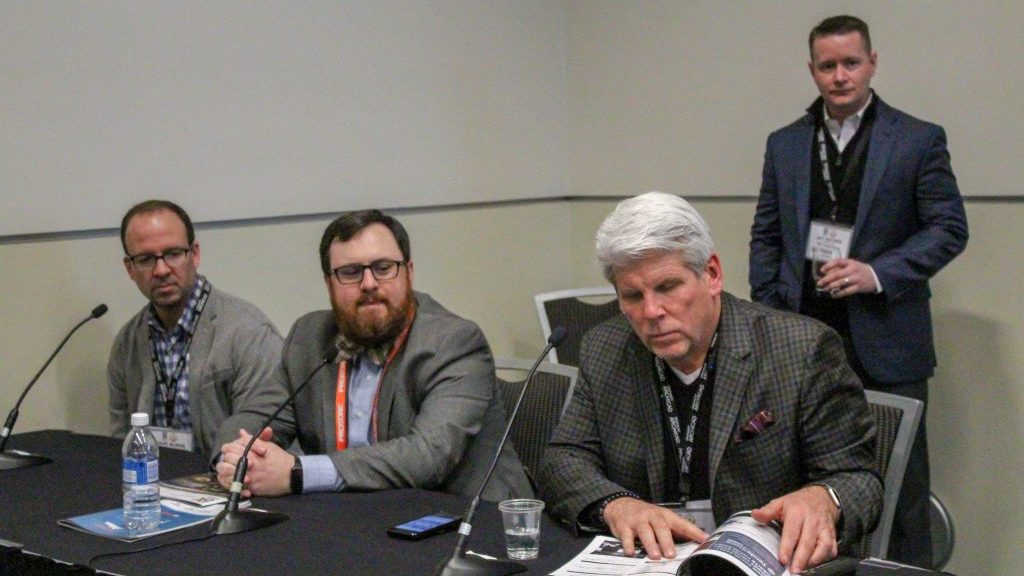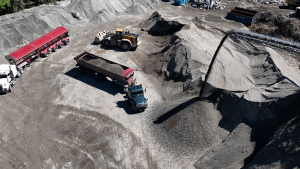Technology is changing the construction industry, but adoption is a complicated process, according to several digitally focused industry leaders.
The Digital Transformation in the Construction Industry panel at Buildex Vancouver consisted of Dave Burns, the director of innovations and field applications at McCarthy Building Companies; Kris Lengieza, the director of business development and marketplace at Procore Technologies; Jay Snyder, a technology practice leader at FMI; and Jim Colvin, the CEO and board director of Serious Labs Inc.
Technology tends to be understood better by younger workers, but the workplace dynamic between younger and older workers and new tech isn’t simple and both sets of people have something to contribute.
“Young people are comfortable around technology, and the more seasoned generation may not be, but they know how to build and how to solve problems in the field,” Lengieza said. “A kid out of college can run a 3-D model with no problem and they’re used to video games, so they’re partnered with a senior superintendent who knows how to solve a plumbing clash because he’s solved this problem 100 times before.”
Senior veterans can’t get around the jobsite as easily anymore and don’t want to swing a hammer but have “all this stuff in their head that can help the younger generation,” Lengieza added.
“Once older workers get up on technology, they know it better than anyone,” Burns said.
Getting a company to buy in on technological change has to happen from both ends of the organization.
“Try to get leadership to buy into the process and the strategy from the start. That will knock down some roadblocks, but you need support from the ground up as well,” Burns said.
“Successful technology solves small problems for large amounts of people. It doesn’t have to be a massive swing to the fences. There’s some really low hanging fruit that can address issues for a lot of works, for example digitization of time cards,” Lengieza said.
But in order to integrate technology into an office and on the worksite, the resources have to be available.
If leadership doesn’t bring this forward, the kids are screaming for it
— Jim Colvin
Serious Labs Inc.
“There’s nothing more demoralizing than having a steering committee talk about technological transformation and then not give them the resources to do it,” Snyder said.
In addition to the “how” there’s also the “why” of technology in construction, Colvin said.
“It’s more about creating a value proposition of ‘why do I want to change what I’m doing right now’ and ‘how do I get there,’ ” he said.
Colvin’s company creates virtual reality boom lift simulators. He said using that technology serves several purposes before a worker climbs into the real thing onsite.
“It applies to downtime onsite due to injury or someone not being qualified, shows how efficient the operator is with the unit, and lastly answers ‘how do I position the boom lift without smashing things,’ ” Colvin said.
As a result, money is saved on repair and maintenance and onsite safety can be improved, he added.
“If they’re thinking less ‘just enough, just in time’ towards skills and safety and instead of prepared ahead of time, they may also get lower insurance rates,” Colvin said.
Lengieza pointed to the necessity of technology benefiting workers first if it’s integrated into the workplace.
“When users are looking for a new solution, they have to see the value in it. You’re either making something easier or taking something away. If you’re adding more work, who’s going to sign up for that?” he said.
Technology should enable people to make their lives easier, to move faster and not feel overworked.
“Sixty to 70 hours of work a week is unsustainable and a product of not having enough people,” he added.
He also said within the industry there is a false expectation that because people are conversant with personal technology, they should also be skilled with technological tools in the workplace.
“That’s a tall order, because some of the (workplace) technologies have a way to go,” Lengieza said.
Colvin said technology can address labour issues in the midst of a downturn and used Alberta’s shifting fortunes as an example.
“The industry was devastated and the workers from Newfoundland left. But the guys coming in now are from a completely different workforce with completely different tech,” he said. “They don’t know how to pick up a wrench, but they can do it on their phone.”
While these workers may have never been on a worksite, they can be trained in VR, he added.
“Teams can be brought in from all over the world and trained in a safe virtual environment. If leadership doesn’t bring this forward, the kids are screaming for it,” Colvin said.











Recent Comments
comments for this post are closed